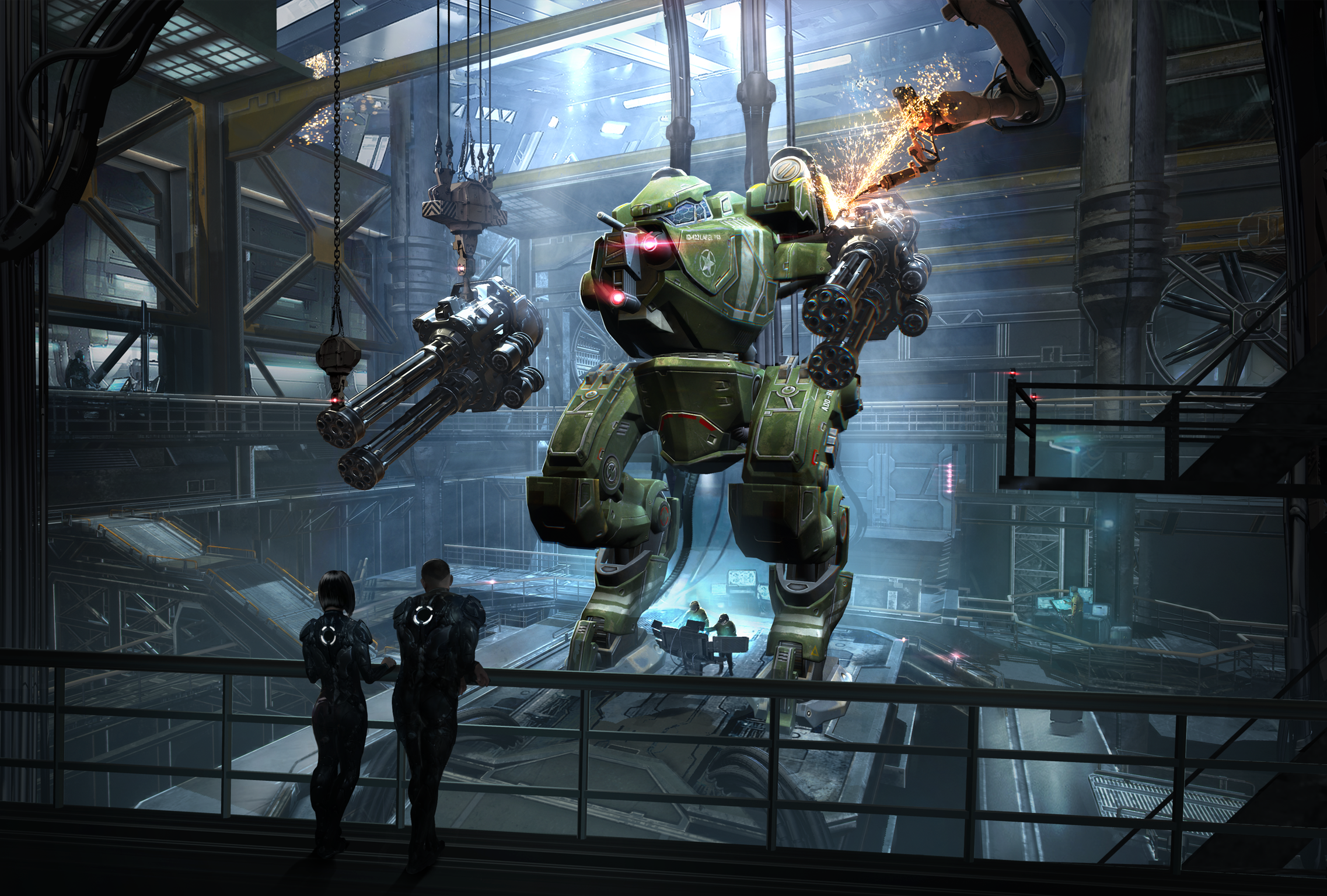
War Robots is a multiplayer tactical third-person shooter in which the player controls a huge robot in a 6v6 team battle.
In the six years since the release of the game, more than 140 pieces of content have been added to the game, 64 of which are robots.
Robots are the core of the game. They are often the topic of discussion in the ranks of the players, they are also one of the main sales engines.
During the existence of War Robots, the team of game designers got their hands on the creation of this kind of content. I'm Erik Paramonov, one of Pixonic's senior game designers, and I'd like to share some tricks using robots as an example that help us create relevant content that takes the place we expect in the meta and the hearts of players.
I'll tell you what a meta card is; how to balance the release of content so as not to let players get bored and not deprive anyone; who is responsible for content decisions; what place the analyst occupies in this process and what parameters to enlist in order to track how successful this or that unit can be.
Meta monitoring
As mentioned above, the War Robots project is already 6 years old. During this time, the game has accumulated an impressive layer of content for beginners, and now we are concentrating more on creating content for high-level players, only occasionally creating new robots for starting positions. The reason for this decision is simple: so much content has accumulated for beginners that on the way from level 1 to the maximum level 30, the player manages to get acquainted, at best, with half of all starting content, after which he begins to collect meta content - which means there is no point in making more low-level robots with gameplay point of view.
When creating high-level content, you need to have an understanding of whether there is a place for it in the meta and whether there will be a demand for it. Thanks to the work of the analytics department, we have identified the main criteria by which you can track meta content:
- ;
- .
A "meta map" was created - a graph on the X-axis of which the robot's popularity is tracked (% of owners of this robot from DAU), and on the Y-axis - its use (% of this robot's spawns from all spawns of this robot's owners).
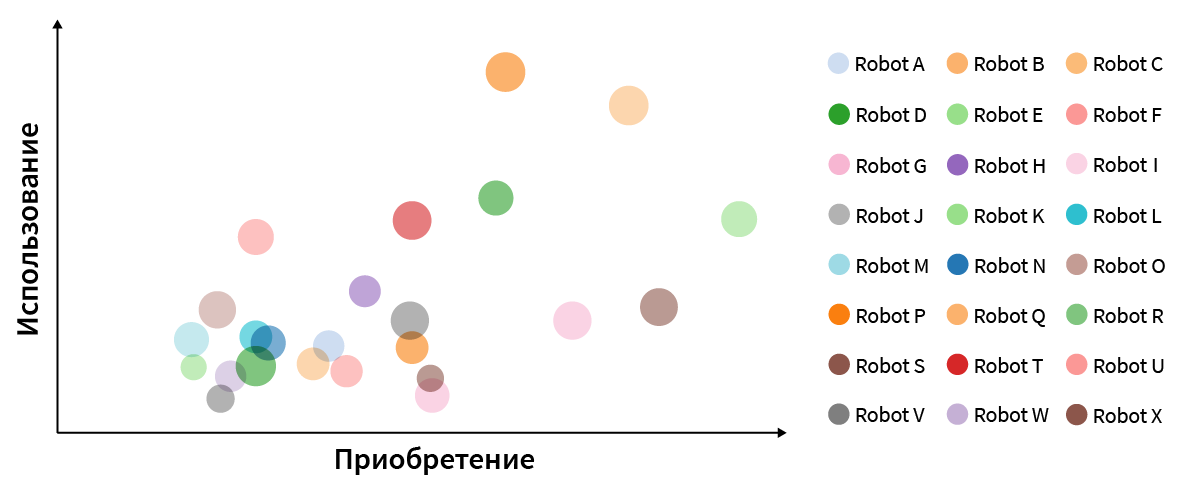
An example of an incomplete robot meta map. The map is constantly updated, and it clearly shows what place each robot took in the meta. The closer the content is to the upper right corner, the more popular it is.
With the ability to track the behavior of content in the meta, we began to better predict it, and in our instructions for developing robots, there were certain requirements for how a robot should occupy on the meta map, depending on its class, in order for it to be considered successful.
Content classification
At the concept stage, we always decide what role the robot will play. The robot classification system has evolved several times - from the simplest breakdown "tank-dd-support" to the current one, which I will talk about a little later.
It became necessary to supplement the classification not only because new robots with radically new mechanics appeared, but also thanks to the meta map, which opened our eyes to some robots.
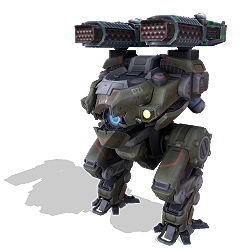
An excellent example of such unexpected discoveries is Bulwark. It was made as a "tank", and on the meta map it spread like a sniper. So it turned out that in our game a good tank should be distinguished not only by good survivability, but also by good mobility.
Each class of robots has its own audience. For each type of audience, it is necessary to periodically release new content and, in order not to let the players down and accidentally slip them a sniper under the guise of a tank, it was decided to conduct a study on the classes of robots.
Departments of the State Duma and analysts have collected statistics on all robots. We were interested in the following averaged parameters:
- Lifetime;
- Strength;
- Damage per life;
- Travel speed;
- The presence of certain bonuses from the ability of the robot;
and a number of other parameters specific to our game.
Next, we brought all these parameters to three basic ones (survivability, damage done, mobility) and tried to find the same ratio of these parameters for different robots. As a result, we were able to distinguish the following classes:
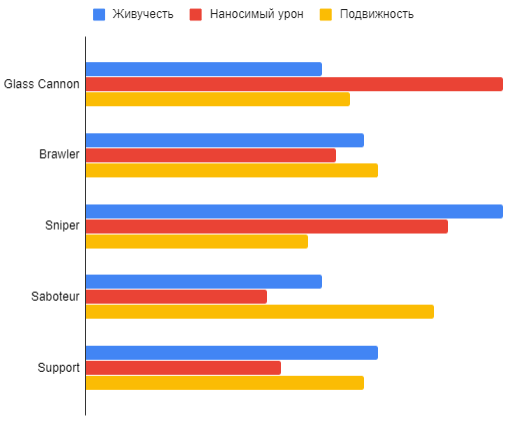
The diagram perfectly conveys the difference between classes. Support (support) had to be taken out separately, since his method of participation in battle is very different from all others, although in terms of parameters it is similar to Brawler (melee fighter) or Saboteur (saboteur).
Glass cannon - "glass cannon". A game term commonly used to describe characters in RPGs that can do the most damage, but have a very high cost of error due to the fact that they are extremely fragile.
Fun fact: as it turned out, our game does not have the classic slow and durable "tank". All of our, as we thought, successful "tanks" were more like melee fighters (brawler). Players are not interested in playing as slow robots with low damage, which do not even have time to get to the beginning of a major battle to realize their potential. They are trying to play with such robots more like snipers. If the player prefers melee distances, he chooses a robust robot that can accelerate for a while and has a high melee damage rate.
This class system was perfectly supported by the meta map, where the number of players who preferred a certain robot matched the number of players who preferred a certain gameplay. With this class system in place, we can fairly accurately predict the behavior of content on the meta map and its distribution.
Niche and periods of content distribution
Players can always be categorized into different archetypes. We divide them according to their preferred gameplay. At the end of 2019, we conducted a survey on the topic of which of the robots released over the year players liked the most. Based on their answers, not only a diagram was drawn up for specific robots, but also a diagram for preferred roles.
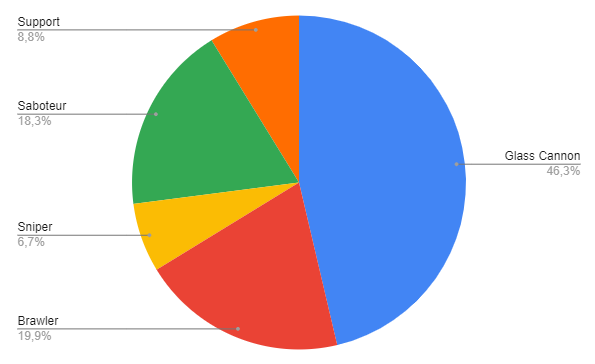
It can be clearly seen that at the time of the survey, most of the players clearly preferred the style of gameplay for Glass Cannon, and the minority - for snipers and support.
The opinion of the players who participated in this survey correlates with the data that we received from the analysis of the full map of the robots meta. Some roles are more popular, some less. This affects how quickly content spreads and how it fits into the meta map. Thanks to this, we made the following conclusions:
- . , .
- , . , , , , , . , , . .
As a result of our research, we set a quota for a year for each class of robots. This not only helped us optimize the use of human resources of different departments required for content development, but also allowed us to create a “healthy” meta, where there is a robot to taste for every type of player.
Content aesthetics
Collecting and analyzing meta data helps us find out what role a new robot should play and what audience it will be interesting to. The next step is to decide what the new robot will be like. What will it look like? How do you sound? What abilities to have? Sometimes these issues caused controversy within the State Duma department, because, for example, all game designers have different ideas about the ideal sniper. To avoid unnecessary conflicts, we have identified three pillars on which the visual content of the content relies.
The first pillar is the Feature Owner (DO). Each piece of content is linked to one GD. On the basis of general discussions and discussions, he makes the final decisions about how the robot will look and play. The FO will have to present its decision to the department lead and subsequently to the producer.

This is how the flow of work on the robot concept looks like. The FI initiates all discussions and of all decisions makes those that it considers the most successful, provided that they are considered the same by the leader and, at least, by a part of the DG team.
The second pillar is the overall aesthetic of the project. The main style of our robots is post-industrial high-tech. Our robots can be very different from each other, but each of them has common recognizable features, and they are all created with the idea that they should not look alien in the world of WR. The fulfillment of this condition is monitored by both the game designer and the art department.

An example of the variety of robots' forms within the same style - one representative per year of the project's life. The difference between robots is visible, but the similarities make them part of the same universe.
The third pillar is the lore of the WR world. Lore WR appeared much later than the game itself, so it cannot be made part of the second pillar. Lore takes into account the style of the project, but adds additional features to the content. For example, there are factions in the lore, and each new robot created must be tied to one of them, which means that it must have references to this faction in its design.
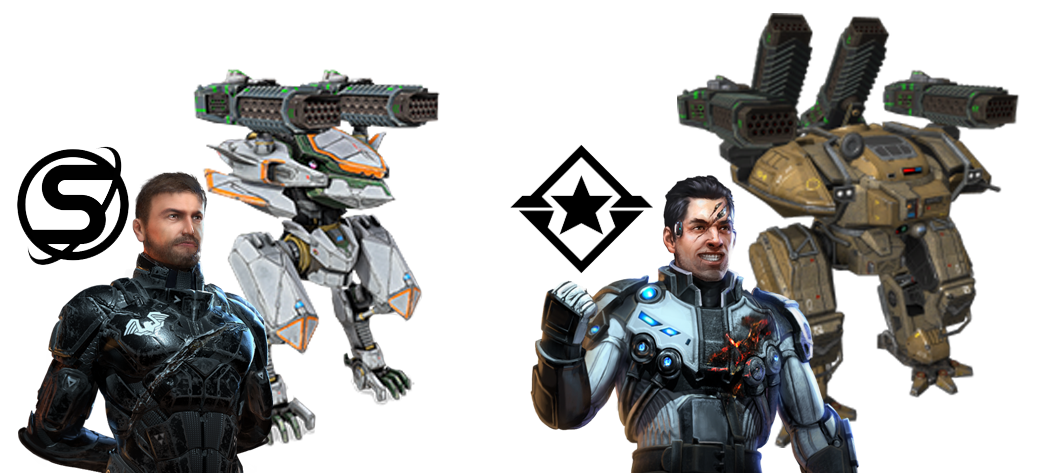
Representatives of Space Tech and DSC factions.
Space Tech is a faction of people who are as close as possible to a modern democratic society. These are the conquerors of space. Their robots are often designed with references to modern technology and culture.
DSC - Totalitarian Militarist Faction. Their robots should be massive, rough and angular, and their abilities simple but effective.
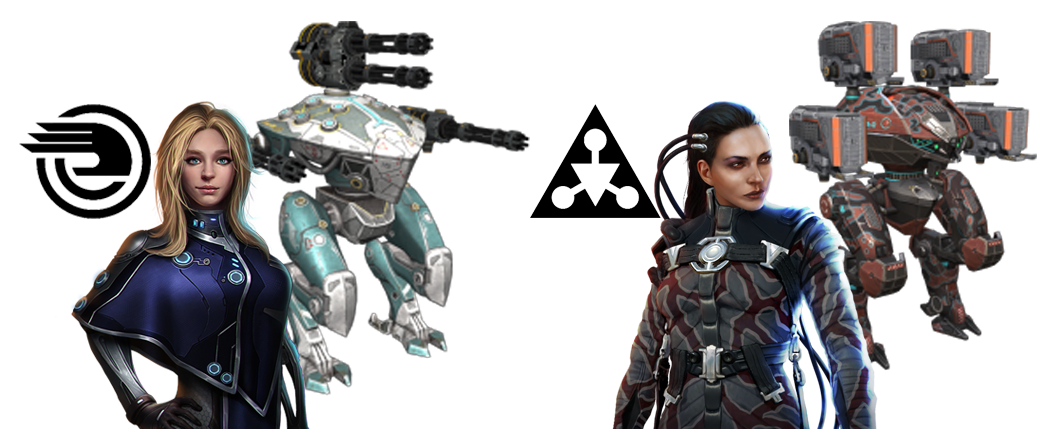
Icarus Technologies Evolife.
Icarus — . — , ( — ).
Evolife — . , , .
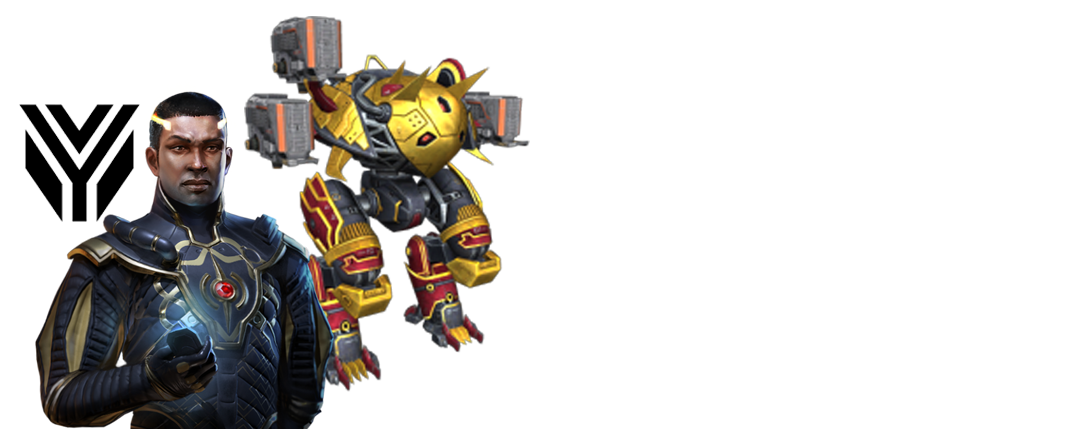
Yan-di Ventures.
Yan-di — . . — (« »).
At the end of this section, I want to add that we are not against fanservice, if it does not contradict the pillars listed above, or if the content is a limited series, available only for a certain period of time.
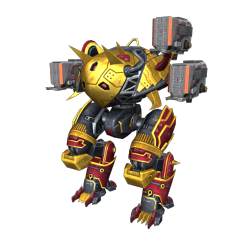
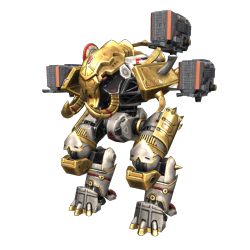
A good example of an acceptable fan service is Ravana and its limited edition Ivory Ravana. Ravana was originally created to delight our Indian players as you can easily tell from its design and name. Such a robot did not break a single pillar and became an integral part of the game. Ivory Ravana continued this tradition, but the elephant is too clearly read in his design, which makes him stand out from the rest of the robots, making it more cartoon / unrealistic. Therefore, it could only be obtained as part of a temporary event.
Content responsiveness
While the DO is determined with the visual part of the robot, it needs to determine the gameplay as well. It's not enough just to balance the stats of a robot to match its role, because each robot has a unique ability (and some have two) that dramatically distinguishes the gameplay on one robot from the gameplay on another with the same role.
When conceptualizing the robot's gameplay, we try to adhere to a few rules.
First, the player must understand what the robot is capable of without reading its description. If this is his first time playing a new robot, the design of the model, the visuals of the ability, and the UI should provide enough information for the player to understand what the robot is doing. We have already tested this rule several times, and each time we made sure that, no matter how interesting the robot, the main thing is that it is understandable to the player.
The number of individual mechanics used in an ability should be limited. The less mechanic is used in an ability, the more power can be put into each of them and the clearer the ability will look.
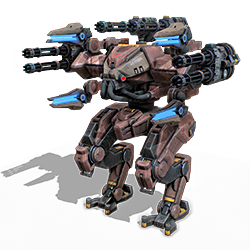
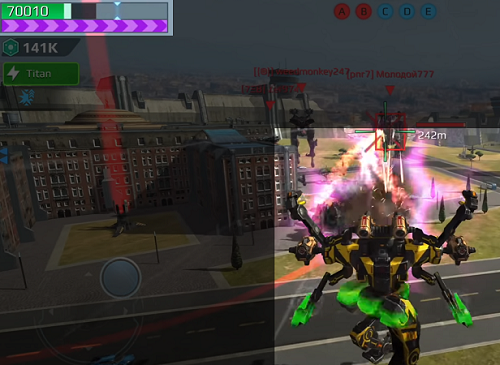
Ares. , , (), (World FX), HUD (UI). , , . , Ares’, , .
Secondly, the average player must understand not only how his robot works, but also how the opponents' robots work. The main technique that we use and which is warmly received by the players is Foreshadowing (from English "anticipation"). The basis of this technique is the player's ability to anticipate what will happen in battle in the near future. The execution of any action of the robot must be visualized using UI / FX / animations so that players can predict the behavior of the enemy in advance.

Foreshadowing example is our guidance system. An experienced player is able to learn enough information about the enemy without even seeing his robot. The screenshot shows how Phantom is watching his victim, which will soon expire the effect of the ability (purple bar above XP) and at the same time will end protection from control effects (red icon above the nickname). With this information, the Phantom player can predict that in a couple of seconds the enemy will be vulnerable, and the attack on him should be started right away, before he disappears.
In order not to detract from the Foreshadowing principle, the robots themselves must also work according to certain rules. On the WR project, we have already made sure that players do not like randomness during a battle. Combat mechanics with a chance to trigger seem unreliable to them, so we try to avoid them or minimize their number.
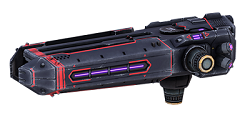
This did not happen with the design of robots, but I can cite cannons as an example. Our energy shotguns, when hit, had a chance to immobilize an enemy robot for a short period of time. After receiving enough complaints that the gun is unpredictable, we reworked its mechanics. Now each hit accumulates a negative effect on the enemy. After accumulating 100%, the effect is triggered.
Finally, everything should have a counter-play. Players should be pleased not only to control any robot, but also to effectively fight against it. Few people like a robot that is good at everything, and can only be defeated by a superior number. By controlling such a robot, as well as playing against it, the player is deprived of the opportunity to demonstrate his tactical genius and skills.
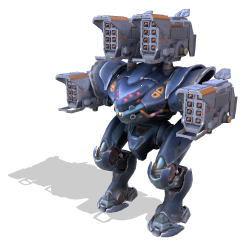

— Spectre Ares. Spectre . Spectre. «» , . Ares, Spectre, , -. Ares , , . .
«»
It is impossible not to mention two important sources of information useful for the State Duma. These are external testing and influencers.
An external test is an open testing session with volunteers (similar to the classic PTR from MMO / MOBA games). External testing for WR is ongoing. For this, a separate server and game client is used. We usually collect the very first feedback on the content on the “outboard”. We also test the strangest and most controversial ideas there.
Players are pleased to feel fresh and unusual content, while earning bonuses in War Robots in the form of in-game currency. It is important for us to get both their opinion through the questionnaire and analytical data collected during the battle (average lifetime, average content damage, etc.).
Players' opinions and statistics may differ, and our task is to understand what went wrong and refine it. To do this, we look at the videos sent by the players and analyze the statistics of the current test, comparing it with the statistics of previously conducted external tests and playtests within the company.
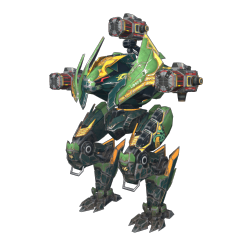
I remember how we were very afraid of the concept of this robot. Loki is the only robot that is able to block the aiming of enemies' guns at itself for an infinitely long time. A rough concept "on dice" was tested on an external test. Loki performed well there and was eventually given the green light.
YouTubers, bloggers and letsplayers are our most active players who not only play WR, but also share their opinions by publishing articles and videos on social networks. Thanks to them, we can understand what the general mood of the players will be, even before it had time to form, and also visually see how the pros play on the content we created.
Outcome
To summarize, I would like to summarize with a small list of tips that can help you create quality content (this list is a condensed version of the text above):
- Analyze already released content. Try to understand what worked out well and how to repeat it, what didn't work out well and how to fix it.
- . , — , . , , , .
- , . , , .
- , «» , .
- , . , . , — .